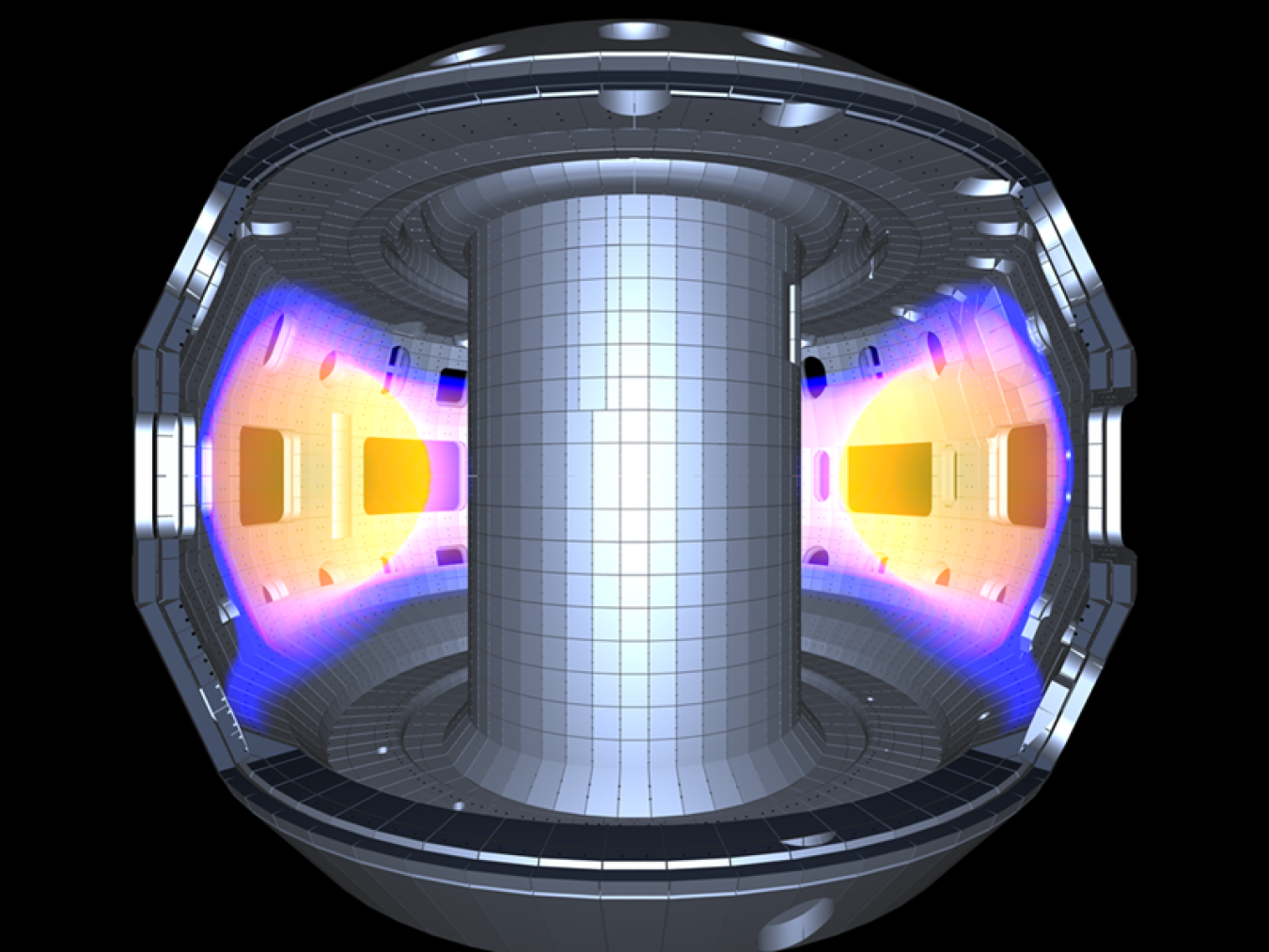Negative triangularity exhibits high core fusion performance and good power handling, pointing to a compelling approach for future fusion pilot plants.
August 21, 2025The Science
Tokamak devices magnetically bottle plasma for fusion, which scientists are working to harness as a new energy source. To maximize a tokamak’s power output, plasma pressure, current, and density must all be high at the same time. Tokamaks must be able to confine the plasma while limiting how much heat reaches the interior walls of the device. Scientists at the DIII-D National Fusion Facility are exploring a new approach to tokamak operation called negative triangularity. In this method, the plasma is in an inverted “D” shape with the curve pointing to the inner wall. Recent results show that negative triangularity can produce stable plasmas that exceed the conditions required for future fusion power plants. These findings indicate that this approach has promise for the design of future fusion power plants that could produce electricity and/or heat.
The Impact
The results of these studies surprised the fusion community. The fact that the device reached plasma stability while also achieving high density, current, and pressure with high confinement is promising. Researchers thought it would actually be less stable than comparative approaches. These findings suggest a potential innovative design path for future plants. The results also indicate that negative triangularity may solve the core-edge integration issue. This is the question of how to keep the edge of the plasma cool while maintaining a hot core. This problem is a key challenge for fusion power plant operation. The conditions observed in this study exceeded the predicted needs for fusion pilot plants. These observations strongly support further investigation into this unique approach to tokamak operation.
Summary
Scientists continue to address science and technology challenges for tokamak-based fusion energy production. In 2023, the DIII-D National Fusion Facility, a Department of Energy Office of Science User Facility, completed a dedicated experimental campaign focused on assessing operation with a negative triangularity plasma shape. The results reported here are the first in a series of publications on the promising potential of negative triangularity for fusion power.
Two key areas of effort along the path to fusion commercialization are achieving high core performance and good power handling. Researchers predict that the needed core performance requires high plasma current, pressure, and density, all of which can be negatively affected by plasma instabilities. Although the research community expected negative triangularity to be less stable than conventional triangularity, research at the DIII-D National Fusion Facility found surprisingly low levels of instability with simultaneous achievement of high pressure, density, and current during negative triangularity operation. Researchers observed the confinement to be very good under these conditions. Additionally, the necessary power handling for fusion pilot plants will require dissipative divertor conditions that reduce heat flux and electron temperature at the interior walls to minimize device damage over time. For the first time, negative triangularity plasmas achieved high confinement with divertor detachment and an instability-free edge, suggesting a solution for core-edge integration. Researchers are investigating divertor detachment in negative triangularity plasmas and its dependence on power and current using state-of-the-art simulation tools to confidently extrapolate to future design points. These features collectively indicate the promising potential of negative triangularity and support further investigation of this regime for development as a fusion pilot plant design.
Contact
Carlos Paz-Soldan
Columbia University
carlos.pazsoldan@columbia.edu
Filippo Scotti
Lawrence Livermore National Laboratory
scottif@fusion.gat.com
Funding
This work was supported by the Department of Energy Office of Science, Office of Fusion Energy Sciences, using the DIII-D National Fusion Facility, a DOE Office of Science user facility.
Publications
Scotti, F., et al., High performance power handling in the absence of an H-mode edge in negative triangularity DIII-D plasmas. Nuclear Fusion 64, 094001 (2024). [DOI: 10.1088/1741-4326/ad5f41]
Paz-Soldan, C., et al., Simultaneous access to high normalized density, current, pressure, and confinement in strongly-shaped diverted negative triangularity plasmas. Nuclear Fusion 64, 094002 (2024). [DOI: 10.1088/1741-4326/ad69a4]


